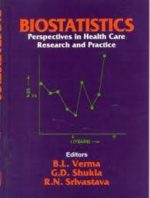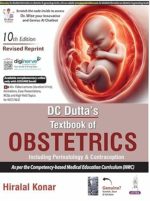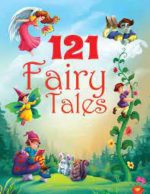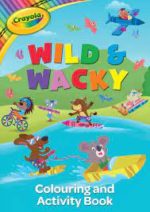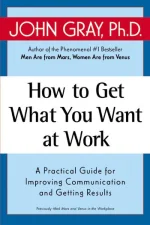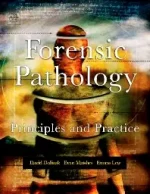-
Biostatistics: Perspective in Health Care Paperback
KSh 11,235.001. Health Surveys. K.Raghav Prasad 2. Sample size determination Sheela Taiwalkar 3. Measuring morbidity from pulmonary tuberculosis KB. Gauzam 4. Methods of mortality data analysis. S. Mukerji and S. Lahiri 5. Path coefficient analysis in medicine. V.G. Kaliaperwnal and N. Sundararaj 6. Categorization of health data and their analysis. A. Indrayan 7. Discrete response analysis in population control: an application of branching process. Bandyopadhyay 8. Survival analysis in clinical data Samir K. Bhattacharya 9. Discriminant analysis in medical diagnosis. T. Krishnan 10. Statistical modelling in health and disease. B.L. Verma 11. Operations research in health care Y.P. Gupta 12. Methods of monitoring, assessment and evaluation of health programmes.
-
DC Dutta’s Textbook of Obstetrics (Including Perinatology & Contraception) HIRALAL KONAR
KSh 10,920.00DC Dutta’s Textbook of Obstetrics (Including Perinatology & Contraception) by Hiralal Konar is one of the most widely used and trusted reference books in the field of obstetrics. Designed for medical students, postgraduate trainees, and practicing clinicians, the book provides a comprehensive, evidence-based, and up-to-date account of obstetrics, perinatology, and contraception.
Now in its updated editions, the book retains its traditional clarity, simple language, and illustrative approach, while integrating the latest advances in maternal–fetal medicine, reproductive health, and modern contraceptive techniques. Each chapter is systematically organized with clinical relevance in mind, making it ideal for both academic study and practical application.
Key highlights include:
Comprehensive coverage of normal pregnancy, complications, labor, puerperium, and operative obstetrics.
Perinatology section focusing on maternal–fetal medicine, high-risk pregnancy, fetal therapy, and neonatal care.
Contraception and family planning explained with updated methods and global guidelines.
Richly illustrated with clinical photographs, flowcharts, tables, and diagrams for easy understanding.
Practical orientation with emphasis on case management, problem-solving, and evidence-based protocols.
Review questions and key points at the end of chapters to support exam preparation.
Because of its balanced mix of theory, clinical practice, and academic rigor, DC Dutta’s Textbook of Obstetrics has remained a cornerstone resource for MBBS, MD/MS students, and a ready reference for obstetricians and gynecologists in practice.
-
121 FAIRLY TALES
KSh 895.00121 Fairy Tales” is a magical collection of traditional fairy tales, filled with enchanting characters, exciting adventures, and valuable …
-
Star Wars Rebels-Rebel in the Ranks: Servants of the Empire
KSh 695.00This is the second book in this original series based on Star Wars Rebels. As a new student at Lothal’s Imperial Academy, Zare Leonis does everything it takes to pass as a model cadet. But secretly, he is a hidden enemy in the ranks, determined to discover the truth about his missing sister and to bring down the Empire. When a mysterious new cadet arrives and seems to have rebellion on his mind, Zare is drawn into a reckless plan that could doom them all… Based on the award-winning animated television series that features the voices of Freddie Prinze JR, Sarah Michelle Geller, Jason Isaacs and James Earl Jones as Darth Vader, these thrilling Star Wars adventures will delight young rebels aged seven and upwards.
-
Benny Learns Patience
KSh 295.00Step into Benny’s heartwarming world with our extraordinary “BENNY’S FIRST STORIES” series. User-friendly 8.5 by 8.1-inch format, this book invite young readers into Benny’s captivating universe. The series boasts durable glossy covers for added elegance and longevity, with pin bindings designed for easy use by little hands. Inside, high-quality art paper transforms each page into a canvas, bringing Benny’s world to life with vivid colors and intricate details. Explore this heartwarming tale: “Benny Learns Patience”: Through Benny’s experiences, children learn the invaluable lessons of patience, perseverance, and their sweet rewards. The “BENNY’S FIRST STORIES” series is more than books; it’s a repository of cherished memories and valuable life lessons. These stories entertain, educate, and inspire, making them a perfect addition to any young reader’s library. Immerse your child in the magic of reading, and let Benny’s adventures nurture their hearts and minds.
-
Quit Smoking Today Without Gaining Weight Paperback
KSh 1,080.00Are you worried about how smoking is damaging your health?
Do you want to quit smoking, but worry that you’ll gain weight?
Would you like to stop cravings in a matter of moments?
Have you tried to quit before, only to start again?
If quitting was easy, would you do it today?
Then let Paul McKenna help you!
Over the past three decades, Paul McKenna, Ph.D., has developed a unique approach that makes quitting surprisingly easy. Through the simple conditioning techniques revealed in this book and downloadable hypnosis session, you can retrain your mind and body so you no longer need cigarettes and actually feel better without them. Better still, you are highly unlikely to gain weight in the process! It doesn’t matter if you’ve smoked all your life, if you’ve tried to quit many times before, or if you don’t believe this system will work for you. All you have to do is follow Dr. McKenna’s instructions fully and completely and he can help you to feel free of cigarettes. -
Activity Book
KSh 495.00Children love to be creative and imaginative, but sometimes they need a little help. This colouring book is full of activity and colouring fun pages that will keep them entertained for hours. With activities to complete from mazes, matching and problem solving they will be learning as they go. Helping to develop recognition, logical thinking, counting and number skills this book is perfect for young children giving them enjoyable time activities that are quiet yet educational at the same time.
Full of activity and colouring fun pages, children can be creative and imaginative filling each page with colourful designs. With activities to complete from mazes, matching and problem solving they will be learning as they go. Helping to develop recognition, logical thinking, counting and number skills and pen control this book is perfect for young children, giving them enjoyable, relaxing and quite time activities that will keep then entertained for hours.
-
How to Get What You Want at Work-John Grey
KSh 3,275.00John Gray claims that by understanding the differences between men and women in the workplace anyone can identify and respond to various business approaches in a manner that earns greater respect and promotes increased cooperation. By recognizing how men and women interpret behaviors and reactions differently, a person can make more informed choices of how to make the best impression.
By showing the many ways men and women misunderstand and misinterpret each other in the workplace, John Gray offers practical advice on reducing unnecessary conflict and frustration. Filled with his trademark communications charts and practical advice on everyday office issues, How to Get What You Want at Work will enable readers to achieve their goals and to make the workplace a source of fulfillment.
-
Diseases of Ear,Nose and Throat-3rd edition
KSh 12,200.00Diseases of Ear Nose and Throat Mohan Bansal – Complete ENT Guide for Students
The book Diseases of Ear Nose and Throat Mohan Bansal (3rd Edition, 2021) is a must-have for every medical student studying Otorhinolaryngology. It simplifies complex ENT concepts, provides updated clinical information, and helps readers build confidence in diagnosing and managing ear, nose, and throat diseases.
At BookSaves.com
, you can easily order this ENT textbook online and enjoy fast delivery across Kenya 🇰🇪.What ENT Means and Why It Matters
ENT (Ear, Nose, and Throat) refers to a medical specialty formally known as Otorhinolaryngology — a vital branch of medicine that deals with hearing, breathing, and speech functions.
Ear: Covers hearing problems, ear infections, and balance disorders.
Nose: Focuses on sinus issues, nasal blockages, and smell problems.
Throat: Involves voice, tonsil, and swallowing disorders.
You can learn more about ENT from trusted medical resources like
👉 The American Academy of OtolaryngologyWhy Choose Diseases of Ear Nose and Throat Mohan Bansal?
Among ENT textbooks, Diseases of Ear Nose and Throat Mohan Bansal stands out for its clear presentation and logical flow. It is especially recommended for MBBS, BSc Nursing, and postgraduate students because it’s simple, practical, and fully updated with modern diagnostic methods.
Key Features of the Book
. Concise chapters covering all ENT diseases
. 200+ clinical illustrations and images
. Case-based learning and self-assessment questions
. Updated surgical techniques and modern diagnostic tools
. Easy-to-understand language for students at all levels
This book makes ENT accessible, even to beginners. It explains everything from ear anatomy to throat infections, ensuring students get a complete picture.
Learning Benefits of Using Diseases of Ear Nose and Throat Mohan Bansal
Diseases of Ear Nose and Throat Mohan Bansal offers more than just theory — it provides real-world medical knowledge. Each section integrates anatomy, pathology, and treatment methods, helping readers understand how ENT diseases develop and how to treat them effectively.
Students love it because:
. It’s exam-friendly with review summaries.
. It follows the latest medical curriculum.
. It’s perfect for quick revision before practical exams.
For more ENT learning support, you can explore related resources such as
👉 Medscape ENT EducationBuy ENT Books Online in Kenya
You can get your copy of Diseases of Ear Nose and Throat Mohan Bansal at BookSaves.com
. We specialize in medical and academic textbooks, including:. Anatomy Books
. Nursing Books
. Medical Reference Books
Why Shop with BookSaves?
. Reliable nationwide delivery
. Competitive prices
. Genuine medical editions
. Friendly customer support
We also ship internationally so you can order from anywhere in the world.
Related ENT Books Available at BookSaves
. Logan Turner’s Diseases of the Nose, Throat and Ear
. Scott-Brown’s Otorhinolaryngology
. Clinical Methods in ENT by Dhingra
ENT for Undergraduates by Clarke and Burton
Explore more medical titles on our BookSaves ENT Collection
page.Conclusion: Why Every Student Needs Diseases of Ear Nose and Throat Mohan Bansal
The Diseases of Ear Nose and Throat Mohan Bansal textbook continues to be one of the most trusted resources for understanding ENT. With its clear explanations, clinical approach, and updated information, it’s an invaluable book for both medical students and practitioners.
📘 Order your copy today at BookSaves.com
— your one-stop shop for quality medical and academic books in Kenya and beyond.
-
Forensic Pathology Principles and Practice
KSh 60,000.00Forensic Pathology is a comprehensive reference that uses a case-oriented format to address, explain and guide the reader through the varied topics encountered by forensic pathologists. Developed in response to a severe void in the literature, the book addresses topics ranging from medicolegal investigation of death to death scene investigation, forensic autopsy, and artifacts of resuscitation as well as complications of medical therapy, forensic osteology, forensic odontology, forensic photography, and death certification. The book includes various types of cases, including sudden natural death, asphyxia, motor vehicle collisions, death in custody, child abuse and elder abuse, acute psychiatric and emotional deaths, and pregnancy. It contains sample descriptions of pathological lesions which serve to aid pathologists in reporting their findings to law enforcement agencies, attorneys, and others involved in investigations of sudden death. The concepts outlined in the text are beautifully illustrated by large, colorful photographs. There are also “Do and Don’t” sections at the end of each chapter that provide guidance for handling the types of cases examined. This work will benefit not only experienced forensic pathologists, but also hospital pathologists who occasionally performs medicolegal autopsies; doctors in training; medical examiners; law enforcement personnel; crime scene investigators; attorneys; and fellows and students of the medical sciences.

